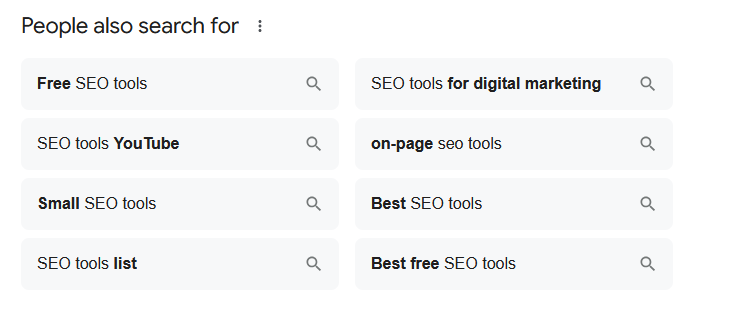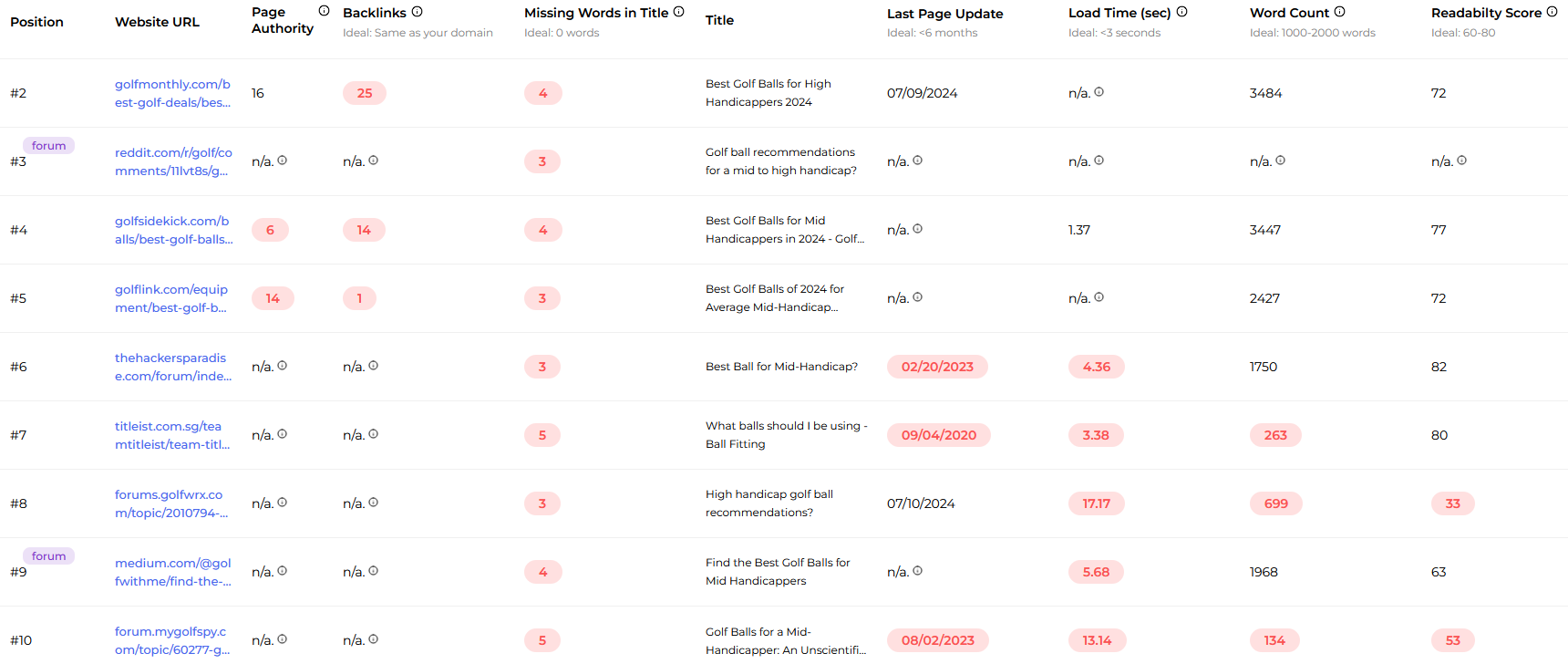Long-tail keywords are more than just a buzzword—they’re a powerful tool for boosting visibility in both search engines, AI snippets in Google, Google’s Gemini and SearchGPT.
In this article, we’ll dive into why long-tail keywords matter, how they can improve your SEO strategy, and provide 10 proven examples to help you rank higher. Whether you’re looking to attract targeted traffic or dominate niche queries, these long-tail keyword examples will give you the edge you need in 2025.
What are Long Tail Keywords?
A long-tail keyword is a more specific, often longer search phrase that targets a niche audience. Unlike broad keywords, these phrases are highly relevant and reflect clearer user intent, making them easier to rank for and more effective in driving qualified traffic.
Here are a few basic long tail keyword example:
- “best running shoes for flat feet” instead of just “shoes.”
- “organic dog food for sensitive stomachs” instead of “dog food.”
- “budget-friendly vacation spots in California” instead of “vacation spots.”
In short, targeting long-tail keywords is a powerful SEO strategy that offers lower competition (easier rankings), higher conversion rates (more clicks from search engines), and better user engagement (more time spent on your site). By aligning closely with user intent, long-tail keywords make it easier to rank and attract targeted traffic.
For platforms like Google, Bing, SearchGPT long-tail keywords help improve your brands’s visibility by ranking for less competitive queries. They are ideal for attracting highly relevant traffic, as they are more specific and often match what users are searching for when looking for detailed, precise information.
Now everything in this world comes with a grain of salt, let’s examine the true pros and cons of targeting long tail keywords:
| Pros of long tail keywords | Cons of long tail keywords |
|---|---|
| Lower competition: Easier to rank for. | Smaller search volume: Fewer people search for them. |
| Higher conversion rates: Matches user intent. | Requires more effort: May need more content to cover various long-tail keywords. |
| Improved content relevance: Attracts niche audiences. | Slower results: It can take longer to see results from long-tail keywords. |
| Voice search optimization: Fits natural speech patterns. | May limit scalability: Focused content might not attract a broad audience. |
| Better engagement: Leads to more qualified traffic. | Can be harder to identify: Finding the right long-tail keywords can be time-consuming. |
| Visibility in AI platforms: LLMs like ChatGPT prioritize specific content. | Limited search data: Harder to analyze search trends due to low search volume. |
Long-tail keywords are essential for aligning with user intent, as they often match specific queries more closely than broader terms. They face less competition, giving smaller or newer websites a better chance to rank for these targeted phrases. Users searching for long-tail keywords usually have clearer intent, leading to higher conversion rates. Additionally, long-tail keywords allow you to focus on niche audiences, making your content more relevant and valuable. With the growing emphasis on content relevance, optimizing for long-tail keywords can help improve your search rankings and visibility.
Overall, incorporating long-tail keywords into your SEO strategy remains beneficial, especially as search engines continue to prioritize user intent and relevant content.
10 Long Tail Keywords Examples
To better understand what long tail keywords look like, let’s consider the following 10 examples and compare them with the short keyword to see why your should target long tail keywords :
| Type of Long-Tail Keyword | Long-Tail Keyword Example | Short Keyword | Main Use Case | Comparison & Benefits |
|---|---|---|---|---|
| Location-based, informational | “best vegan restaurants in San Francisco” | “vegan restaurants” | For users looking for recommendations in a specific area. | More specific, targeting users who want local recommendations. |
| Problem-solving, instructional | “how to train a puppy to stop biting” | “puppy training” | Helps users find solutions to specific pet behavior issues. | Addresses a specific issue, appealing to users seeking solutions. |
| Budget-focused, location-based | “affordable family vacation spots in Florida” | “vacation spots” | Targets families looking for cost-effective travel destinations. | Targets budget-conscious families, narrowing down the audience. |
| Product-specific, niche | “top-rated noise-canceling headphones for travel” | “headphones” | Focuses on travel needs for noise-canceling headphones. | Focuses on travel-related needs, making it more relevant for the audience. |
| Niche, beginner-focused | “easy gluten-free dessert recipes for beginners” | “gluten-free recipes” | Attracts beginners looking for simple recipes. | Targets beginner cooks, making the content more approachable. |
| Subject-specific, educational | “best online courses for learning digital marketing” | “online courses” | Attracts users interested in digital marketing skills. | Specifies a subject area, attracting users seeking specialized knowledge. |
| Problem-solving, DIY | “how to fix a leaky kitchen faucet” | “kitchen faucet” | Caters to DIY homeowners looking to solve a common household issue. | Addresses a common problem, appealing to DIY homeowners. |
| Feature-specific, informational | “best apps for tracking fitness goals” | “fitness apps” | Targets users looking for apps with specific features like fitness tracking. | Targets users looking for specific features in apps, enhancing relevance. |
| Product-specific, health-focused | “buy organic skincare products for sensitive skin” | “skincare products” | Appeals to users with specific skin concerns who prefer organic products. | Appeals to health-conscious consumers with specific skin concerns. |
| Business-focused, solution-oriented | “best practices for remote team communication” | “team communication” | For business leaders seeking effective remote communication strategies. | Targets business leaders seeking effective strategies for remote work. |
Long Tail Keywords vs. Short Tail Keywords
Let’s quickly break down the differences between long tail and short tail keywords.
| Aspect | Long-Tail Keywords | Short-Tail Keywords |
|---|---|---|
| Definition | Phrases typically consisting of 3 to 5 words. | Broad terms usually 1 to 2 words. |
| Specificity | Highly specific, targeting niche topics. | General and vague, covering a wide range. |
| Search Intent | Reflects specific user intent (e.g., purchase). | Reflects broader intent (e.g., general interest). |
| Competition | Less competitive; easier to rank for. | Highly competitive; harder to rank for. |
| Search Volume | Lower search volume per keyword. | Higher search volume per keyword. |
| Conversion Rate | Typically higher due to targeted intent. | Generally lower, as the audience is broader. |
| Examples | “best running shoes for flat feet” | “shoes” |
| User Engagement | Attracts qualified traffic; better engagement. | Attracts high traffic but less qualified. |
| Content Relevance | More relevant to specific queries. | Less relevant to individual queries. |
| Use in SEO Strategy | Ideal for targeting specific audiences and niches. | Good for brand awareness and general traffic. |
Long-tail keywords are effective for capturing niche audiences and driving conversions, while short-tail keywords are useful for attracting general traffic and increasing brand visibility. Integrating both into your SEO strategy can provide a balanced approach to reaching a wider audience while also engaging specific user intents.
Benefits of Using Long Tail Keywords
Targeting long-tail keywords in your SEO strategy can yield significant advantages in attracting and converting targeted traffic without much competition. This is how our team at TopicRanker has grown our own organic traffic in 2024.
Here are the main benefits of using long-tail keywords:
- Higher Conversion Rates: Long-tail keywords often attract users with specific intents, making them more likely to convert into customers. For example, someone searching for “buy organic dog food for sensitive stomachs” is more inclined to make a purchase than someone searching for just “dog food.”
- Lower Competition: These keywords typically face less competition compared to short-tail keywords, allowing smaller websites to rank higher in search results. This is particularly beneficial for new or niche websites.
- Improved Relevance: Long-tail keywords closely match user search queries, enhancing content relevance. This alignment can lead to better engagement and satisfaction among users, increasing the likelihood they’ll spend more time on your site.
- Targeted Audience: By focusing on long-tail keywords, you can attract a more specific audience interested in your particular offerings, resulting in higher-quality traffic.
- Cost-Effective PPC Advertising: In paid search campaigns, long-tail keywords can lead to lower costs per click (CPC) due to less competition, making your ad spend more efficient.
- Better Voice Search Optimization: With the rise of voice search, users tend to speak in longer phrases. Long-tail keywords align well with natural language queries, improving your chances of ranking for voice searches.
- Enhanced Content Strategy: Using long-tail keywords encourages the creation of more detailed and specific content, which can help establish authority in your niche and improve your overall SEO performance.
- Improved User Experience: When your content matches user search intent, it leads to a better user experience, reducing bounce rates and increasing the likelihood of return visits.
- Opportunity for rank Featured Snippets: Long-tail keywords often present opportunities to rank for featured snippets, which can significantly increase visibility and click-through rates.
- Market Insights: Analyzing long-tail keyword performance can provide valuable insights into customer preferences and trends, helping inform your overall marketing strategy.
How to Find Long Tail Keywords
Reddit and Quora are treasure troves of user questions and feedback that can help you discover long tail keywords.
Here are some effective strategies I typically used to quickly identify valuable long tail keywords:
Using Reddit To Mine Longtail Keywords
I start by exploring relevant subreddits for my topic. For example I love hiking, and I have a good friend who lives in nortwest, so I explore a relevant subreddit:
1. Explore Relevant Subreddits and Topics
- Identify Subreddits: For a niche like outdoor activities, consider subreddits such as:
- r/Hiking: Users share experiences and ask for advice about hiking.
- r/Camping: Discussions about camping gear, tips, and locations.
- Example: In r/Hiking, you might find a thread titled “What are the best beginner hikes in the Pacific Northwest?” This can inspire long-tail keywords like “best beginner hikes in the Pacific Northwest.”
2. Analyze Questions and Discussions on Quora
- Search for Your Niche: Look for questions related to outdoor activities on Quora.
- Example: A question like “What is the best way to prepare for a hiking trip?” could lead to long-tail keywords such as “how to prepare for a multi-day hiking trip.”
3. Identify Common Pain Points
- Read Through Comments: Focus on specific concerns users express in comments.
- Example: If a user mentions, “I always struggle to find kid-friendly hiking trails,” this can be translated into a long-tail keyword like “kid-friendly hiking trails in [your location].”
4. Create a List of Potential Keywords
- Compile Keywords: As you gather keywords from the discussions, maintain a running list.
- Example: From Reddit and Quora, you might compile:
- “best hiking shoes for flat feet”
- “easy camping recipes for families”
- “affordable hiking gear for beginners”
5. Type in the keyword into TopicRanker To Test and Validate
- Use TopicRanker or another keyword research tools: Check each keyword for search volume and competition using tools like TopicRanker or Google Keyword Planner.
- Example: After testing, you might find that “best hiking shoes for flat feet” has a decent search volume with low competition, making it a prime candidate for content creation.
Here is a summary of my sample research
I went to Reddit and found this subreddit and identified this keyword:
Reddit Thread Example: “What are the best beginner-friendly hiking trails in Colorado?”
Long-Tail Keyword: “beginner-friendly hiking trails in Colorado.”
I went to Quora and identified this keyword:
Quora Question Example: “What should I pack for my first camping trip?”
Long-Tail Keyword: “packing list for a first-time camping trip.”
I went to use comments and identified this keyword:
User Comment Example: “I wish I knew where to find scenic hikes that are easy enough for my kids.”
Long-Tail Keyword: “scenic easy hikes for kids in [location].”
I compiled my long tail keywords
-
-
- “top hiking gear for beginners”
- “best camping tips for first-time campers”
- “how to choose the right sleeping bag for camping”
-
I used TopicRanker to validate and find out that the competition is the lowest on this one:
-
- Keyword: “best camping tips for first-time campers.”
- After validation, I discovered it has a good search volume and low competition, making it a great target for my blog post.
By refining your approach with these enhanced examples, you can better identify and utilize long-tail keywords that resonate with your audience, improving your content strategy and driving more targeted traffic.
#2 Use Google “Related Searches” Hack
Google’s related searches feature can provide great long tail keyword ideas. Here’s how to use it:
- Type a broad keyword in Google search, like “SEO tools.”
- Scroll to the bottom of the search results page to find the “Related Searches” section.
- Identify the longer, more specific phrases Google suggests. These are potential long tail keywords that users commonly search for.
#3 Use TopicRanker To Find Long Tail Keywords
TopicRanker is a powerful tool for finding easy-to-rank long tail keywords.
Here are basic steps I take to find long tail keywords which are easy to rank for:
1. Input Your Seed Keyword
- Start by entering a seed keyword relevant to your niche or area of interest in the search bar. For example, if you’re focusing on “hiking,” input that term.
3. Analyze the Generated Longtail keywords
- After entering your seed keyword, TopicRanker will generate a list of long tail keywords related topics and keywords. All of these keywords have a specific weak spot on the search results making them easy to rank for. Look for long-tail keywords that appear in the results.
- Example: You might see suggestions like:
- “best hiking trails for beginners”
- “affordable hiking gear for families”
- “hiking tips for beginners in the mountains”
4. Explore Longtail Keyword Metrics
- Look at the longtail keywords to view additional metrics such as weak spots on SERP, search volume, competition level, and potential traffic. This data can help you assess the value of each long-tail keyword.
- Focus on Keywords with High Search Volume and Low Competition: These are ideal targets for content creation.
5. Refine Your Search
- Use filters or additional keyword suggestions to refine your search. You can explore various related terms or modify your seed keyword for broader or more specific results.
- Example: If you input “hiking,” you might also try “hiking with kids” or “hiking safety tips” to find more specific long-tail keywords.
6. Create a Keyword List
- Compile a list of valuable long-tail keywords based on your findings. Note their metrics to prioritize which keywords to target in your content strategy.
Here is a quick video demo of how to use the platform:
Here is a sample report. As noted above you will need to filter long tail keywords with lower competition that match your target audience’s needs.
Incorporating Long Tail Keywords in Your Content Strategy
Once you’ve identified relevant long tail keywords, the next step is to strategically incorporate them into your content. This process involves creating targeted content that addresses the specific needs and questions of your audience while naturally integrating your chosen keywords.
Here’s a quick step by step of what to do to create targeted content that addresses long-tail keywords, complete with examples.
Let’s say the long-tail keyword you want to target is “best hiking trails for beginners in Colorado,” you could create a blog post titled “Top 10 Beginner Hiking Trails in Colorado: Easy Routes to Explore”. The content would include detailed descriptions of each trail, high-quality images, and user-friendly layout, all optimized for SEO.
Here is what I would do next:
1. Understand User Intent
- Research the Keyword: Since your term is “best hiking trails for beginners in Colorado,” understand that users are likely looking for easy trails to explore. So you need to analyze easiness of all trails in Colorado and document that. Make sure to use this long tail keyword as your title for the article.
- Identify Pain Points: Users may want reassurance about trail difficulty and safety, or they might be looking for easiness levels comparison along with scenic views of the trail of course.
2. Develop Content Ideas
- Brainstorm Topics: For example : “Top 10 Beginner Hiking Trails in Colorado” or “Essential Gear for New Hikers in Colorado.”
- Create Buyer Personas: For example: Target beginner hikers aged 20-40 who seek family-friendly options, focusing on accessibility and safety and easiness.
3. Structure Your Content
- Use Subheadings: Structure with headings like “1. Flatirons Loop” (H2) and “Why This Trail is Great for Beginners” (H3).
- Break Up Text: Use bullet points to list trail features, like distance, elevation gain, and points of interest.
4. Write Engaging, Informative Content w/ Reddit or other Opinions
- Focus on Quality: Create a detailed guide about each trail, discussing length, terrain, and scenic views. Remember the pain points from #1 above and address them.
- Use Real-Life Examples: Share a personal experience hiking the Flatirons Loop, highlighting its ease and beauty. Gather sentiment from Reddit.
5. Include Related Keywords and Phrases
- Semantic Variations: Use phrases like “easy hiking trails in Colorado” or “family-friendly hikes” throughout the content.
- Utilize Synonyms: Incorporate synonyms like “hiking paths” or “nature walks” to cover more search variations.
6. Incorporate Visuals
- Use Images and Videos: Include photos of the trails or a short video showing a hike along one of the paths. Use alt text such as “Beginner hiking trail in Colorado.”
- Infographics: Create an infographic summarizing the top trails, including distances and difficulty levels.
7. Create a Call to Action (CTA)
- Encourage Engagement: Invite readers to share their own hiking experiences or ask questions about specific trails in comments or on social when they share.
- Connect with Users: Include a CTA like “Sign up for our newsletter for more hiking tips and trails.”
8. Optimize for SEO
- Meta Tags: Use the long-tail keyword in the title tag of the article (as I mentioned above), e.g., “Best Hiking Trails for Beginners in Colorado | Top Picks,” and in the meta description.
- Internal and External Links: Link to related content, like a guide on “What to Pack for a Day Hike,” and credible sources like state park websites.
9. Promote Your Content
- Share on Social Media: Post snippets of your content with eye-catching images on platforms like Instagram or Pinterest, where outdoor enthusiasts are active.
- Engage with Communities: Participate in Facebook groups or Reddit threads about hiking, sharing your content when relevant.
10. Monitor Performance and Iterate
- Use Analytics Tools: Track engagement metrics to see which trails are most popular and which keywords drive traffic.
- Make Adjustments: Update the article based on user feedback or new trails that may become available.
Common Misconceptions About Long Tail Keywords
While long tail keywords offer numerous benefits, there are some common misconceptions that may lead you astray when incorporating them into your SEO strategy.
Let’s address these myths and clarify the truth behind long tail keywords.
Myth: Long Tail Keywords Always Have Low Search Volume
One of the most prevalent misconceptions about long tail keywords is that they always have low search volume. While it’s true that many long tail keywords receive fewer searches compared to short tail keywords, this isn’t always the case.
Some long tail keywords can still have significant search volume, especially in popular niches or those with a large target audience.
For example, “best wireless noise-canceling headphones for travel” may have a higher search volume than you might expect, as it targets a specific need for a popular product category.
When conducting keyword research, analyze the search volume for each long tail keyword you consider. You may be surprised to find that some long tail keywords have substantial search volume while still being less competitive than their short tail counterparts.
Myth: Long Tail Keywords Are Always Easier to Rank For
Another common misconception is that long tail keywords are always easier to rank for compared to short tail keywords. While long tail keywords generally have less competition, this doesn’t mean they’re automatically easy to rank for.
The level of competition for long tail keywords can vary significantly depending on the niche and the specific keyword. In some highly competitive industries, even long tail keywords can be challenging to rank for, especially if many established websites are targeting them.
Analyzing the SERP can help you gauge the level of competition for a specific long tail keyword. By examining the top-ranking pages, you can determine the difficulty of ranking for that keyword and adjust your strategy accordingly.
Myth: Long Tail Keywords Are Only for Small Businesses
Some people believe that long tail keywords are only suitable for small businesses or niche websites. However, this couldn’t be further from the truth. Businesses of all sizes can benefit from targeting long tail keywords as part of their SEO strategy.
Large enterprises and well-established websites can use long tail keywords to target specific segments of their audience or to rank for less competitive terms related to their products or services.
By incorporating long tail keywords into their content strategy, these businesses can attract highly targeted traffic and improve their overall search engine visibility.
Small businesses, on the other hand, can leverage long tail keywords to compete with larger websites in their niche. By targeting less competitive, niche-specific keywords, small businesses can attract qualified traffic and establish themselves as experts in their field.
Regardless of your business size or industry, incorporating long tail keywords into your SEO strategy can help you attract targeted traffic, improve your search engine rankings, and ultimately drive more conversions.
Are Long Tail Keywords Worth Pursuing?
Absolutely! Long tail keywords offer numerous benefits that make them a valuable addition to your SEO strategy.
These specific, niche-oriented phrases can help you attract highly targeted traffic to your website, as users searching for long tail keywords often have a clear idea of what they’re looking for. This increased relevance leads to higher engagement rates, lower bounce rates, and ultimately, better conversion rates.
Targeting long tail keywords also allows you to establish topical authority in your niche. By creating content that addresses specific questions, concerns, or needs related to your industry, you demonstrate your expertise and build trust with your audience.
Over time, this can lead to increased brand recognition and loyalty, as users come to rely on your website as a valuable resource.
Moreover, long tail keywords are generally less competitive than short tail keywords, making it easier for you to rank higher in search engine results pages (SERPs). This is particularly beneficial for smaller websites or those just starting out, as it provides an opportunity to gain visibility and attract traffic without having to compete against larger, more established websites.
However, it’s important to remember that long tail keywords should be part of a comprehensive SEO strategy that also includes short tail keywords. While long tail keywords can drive targeted traffic and improve conversion rates, short tail keywords are still essential for establishing overall brand awareness and attracting a broader audience.
The key is to find a balance between long tail and short tail keywords that aligns with your business goals and target audience. Conducting thorough keyword research and analyzing competitor strategies can help you identify the most valuable long tail keywords for your website and determine how to incorporate them into your content strategy effectively.
Incorporating long tail keywords into your SEO strategy can drive targeted traffic, improve conversion rates, and establish topical authority. TopicRanker makes it easy to find these valuable keywords, helping you reach your niche audience effectively.
Sign up for your account and find those easy to rank keywords today!

Mike is currently the head of SEO and co-founder of Contact Studios, where he has built a reputation for securing long-term ranking wins through comprehensive keyword research and technical SEO. His focus on scalable strategies, paired with a deep understanding of search engine algorithms, has consistently helped businesses outperform their competitors and dominate search results.



